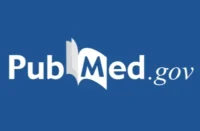⚡ Quick Summary
This study explores the use of machine learning to enhance the prediction of survival outcomes and therapeutic interventions for breast cancer patients through multi-omic analysis. By leveraging complex datasets, machine learning offers a promising approach to personalize treatment strategies and improve patient outcomes.
🔍 Key Details
- 📊 Focus: Breast cancer survival and therapeutic outcome prediction
- 🧩 Data Type: Multi-omic data
- ⚙️ Technology: Various machine learning methods
- 🏆 Objective: Improve treatment efficacy and quality of life for patients
🔑 Key Takeaways
- 🔍 Heterogeneity in breast cancer complicates treatment and prognosis.
- 💡 Machine learning can analyze large datasets to identify complex patterns.
- 📈 Traditional methods often rely on limited biomarkers, reducing predictive accuracy.
- 🤖 Multi-omic analysis allows for a more comprehensive understanding of cancer biology.
- 🏥 Personalized treatment strategies can lead to better therapeutic outcomes.
- 🌍 The study aims to provide precise treatment strategies for breast cancer patients.
- 🗂️ Authors: Zhang ZY, Wang QL, Zhang JY, Duan YY, Liu JX, Liu ZS, Li CY.
- 📅 Published in: Yi Chuan, 2024.

📚 Background
Breast cancer is known for its high heterogeneity, which poses significant challenges in determining effective treatment plans and accurately assessing prognosis. Factors such as tumor subtype, histological grade, and genotype play crucial roles in treatment decision-making, highlighting the need for personalized treatment strategies that cater to individual patient profiles.
🗒️ Study
The study introduces various machine learning methods and discusses their applications in predicting survival and treatment outcomes for breast cancer patients. By analyzing multi-omic data, researchers aim to uncover intricate patterns that can inform treatment decisions and enhance patient care.
📈 Results
The application of machine learning in this context has shown promising results, indicating that it can effectively predict survival outcomes and guide treatment selection. This approach not only improves the accuracy of predictions but also facilitates early interventions, ultimately leading to enhanced treatment efficacy for patients.
🌍 Impact and Implications
The integration of machine learning into breast cancer treatment strategies could significantly transform patient care. By providing more accurate predictions and personalized treatment options, this technology has the potential to improve the quality of life for breast cancer patients and optimize therapeutic outcomes. The implications extend beyond breast cancer, suggesting a broader application of machine learning in oncology.
🔮 Conclusion
This study highlights the transformative potential of machine learning in the realm of breast cancer treatment and prognosis. By utilizing multi-omic analysis, healthcare professionals can develop more precise and effective treatment strategies, paving the way for improved patient outcomes. The future of breast cancer management looks promising with the continued integration of advanced technologies.
💬 Your comments
What are your thoughts on the role of machine learning in breast cancer treatment? We invite you to share your insights! 💬 Leave your comments below or connect with us on social media:
Machine learning applications in breast cancer survival and therapeutic outcome prediction based on multi-omic analysis.
Abstract
The high heterogeneity within and between breast cancer patients complicates treatment determination and prognosis assessment. Treatment decision-making is influenced by various factors, such as tumor subtype, histological grade, and genotype, necessitating personalized treatment strategies. Prognostic outcomes vary significantly depending on patient-specific conditions. As a critical branch of artificial intelligence, machine learning efficiently handles large datasets and automates decision-making processes. The introduction of machine learning offers new solutions for breast cancer treatment selection and prognosis assessment. In the field of cancer therapy, traditional methods for predicting treatment and survival outcomes often rely on single or few biomarkers, limiting their ability to capture the complexity of biological processes comprehensively. Machine learning analyzes patients’ multi-omic data and the intricate patterns of variations during cancer initiation and progression to predict patients’ survival and treatment outcomes. Consequently, it facilitates the selection of appropriate therapeutic interventions to implement early intervention and improve treatment efficacy for patients. Here, we first introduce common machine learning methods, and then elaborate on the application of machine learning in the field of survival prediction and prognosis from two aspects: evaluating survival and predicting treatment outcomes for breast cancer patients. The aim is to provide breast cancer patients with precise treatment strategies to improve therapeutic outcomes and quality of life.
Author: [‘Zhang ZY’, ‘Wang QL’, ‘Zhang JY’, ‘Duan YY’, ‘Liu JX’, ‘Liu ZS’, ‘Li CY’]
Journal: Yi Chuan
Citation: Zhang ZY, et al. Machine learning applications in breast cancer survival and therapeutic outcome prediction based on multi-omic analysis. Machine learning applications in breast cancer survival and therapeutic outcome prediction based on multi-omic analysis. 2024; 46:820-832. doi: 10.16288/j.yczz.24-156
